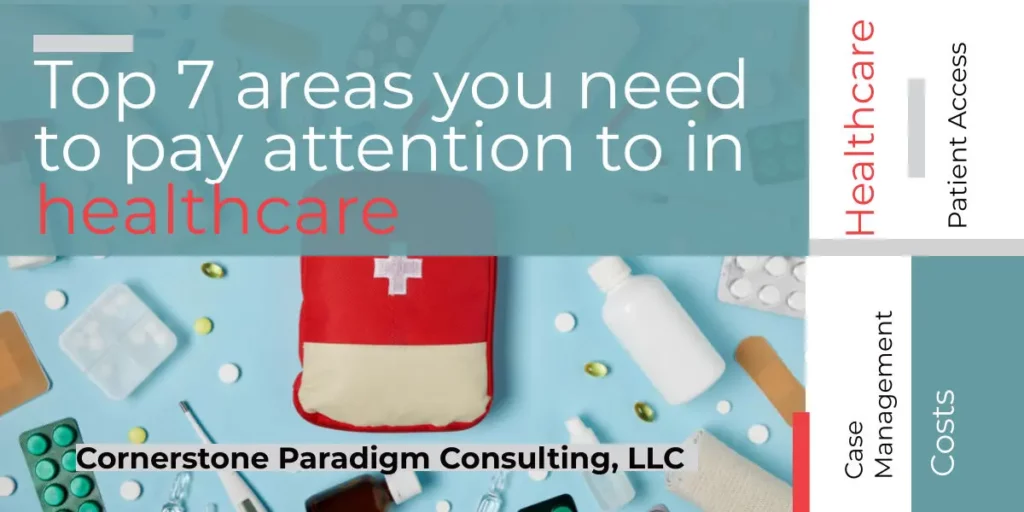Healthcare’s Wake-Up Call: The Urgent Need for Reform Amidst Alarming Satisfaction Rates
Truth be told, healthcare in the US has experienced some improvements in the last decade. However, these improvements are inadequate compared to the country’s population, and a recent study showed that only seven percent of the people are satisfied with the healthcare system.
Despite some improvements in the healthcare system, it is clear that there is still a lot of work to be done. The satisfaction rate among Americans is alarmingly low, and this highlights the need for further reforms and changes.
One major issue that continues to plague the US healthcare system is its high cost. According to a report by the Commonwealth Fund, the US spends more than twice as much on healthcare per capita compared to other developed countries. This high cost is a result of various factors, including administrative costs, prescription drug prices, and the utilization of expensive medical procedures. As a result, many Americans struggle to afford necessary medical care, leading to disparities in access to healthcare.
Another issue that needs attention is the lack of universal healthcare coverage in the US. Unlike many other developed countries, healthcare in the US is primarily provided through employment-based insurance or private insurance plans. This leaves millions of Americans without health insurance, making it difficult for them to access necessary medical care. Furthermore, even those with insurance may still face high out-of-pocket costs and limited coverage.
The COVID-19 pandemic has also exposed major flaws in the US healthcare system. The disproportionate impact of the virus on marginalized communities and the inadequate response from the government have shed light on long-standing systemic issues such as unequal access to healthcare and socioeconomic disparities.
To address these challenges, there needs to be a concerted effort towards comprehensive and inclusive healthcare reform. This involves addressing the root causes of high costs, implementing universal coverage, and addressing systemic disparities. It also requires collaboration between government agencies, healthcare providers, and other stakeholders to ensure that all Americans have access to affordable and quality healthcare.
While there have been some improvements in the US healthcare system, it is clear that more needs to be done to meet the needs and expectations of the American people. By acknowledging the existing issues and actively working towards comprehensive reforms, we can create a healthcare system that truly serves and benefits all individuals in the country. We must continue to strive for progress and improvement to achieve better health outcomes for all. So let’s join together in advocating for a stronger and more equitable healthcare system for our nation.
Additional steps such as increasing investments in preventive care, addressing social determinants of health, and promoting a shift towards value-based care can also contribute towards improving the overall state of healthcare in the US. All stakeholders need to prioritize the well-being of individuals over profits and work together toward creating a system that prioritizes equity, affordability, and quality. With determination and collaboration, we can create meaningful change in the US healthcare system and ultimately improve the lives of all Americans. Let us continue to push for progress and advocate for a healthcare system that truly serves its people. Together, we can make a difference in shaping the future of healthcare in the US. So let’s keep the conversation going and work towards creating a healthier nation for generations to come.
The challenges facing the healthcare industry fall under three broad categories namely.
- Poor quality of care
- Rising expenditures
- Shortages and inefficiencies
We can subdivide each category into different critical challenges. Poor quality of care presents the following individual challenges:
- Preventable medical errors essentially lead to an increase in avoidable mortality rates
- Inadequate data leads to poor reporting and a lack of transparency
- Low or poor patient access to good doctors
Rising expenditures present the following individual challenges:
- High costs of care
- Lack of insurance coverage
Shortages and inefficiencies present with the following individual challenges:
- Poor availability of healthcare staff relative to the patient population
- Inefficiencies in administration and management
This article discusses the top 7 areas you need to pay attention to in healthcare to provide quality care for your consumers.
1. Preventable medical errors leading to avoidable mortality rates
According to a recent study by Johns Hopkins Hospital, in which they analyzed medical death rates for eight years, more than 250,000 deaths happened per year due to medical errors. Furthermore, the study stated that this number accounted for about 10% of all U.S. deaths, making medical errors the third leading cause of death after heart disease and cancer.
Additionally, the Healthcare Access and Quality (HAQ) Index ranks countries on the quality of healthcare their citizens receive. The index also measures premature deaths that could have been prevented by effective and timely care. The United States did not fare well in the ranking, falling behind countries like the Netherlands, Sweden, Australia, Germany, France, and the United Kingdom.
2. Inadequate data leading to poor reporting and a lack of transparency
A significant cause of lack of transparency is “upcoding”, where providers upcode a procedure to charge insurance companies more. Conversely, insurance companies charge higher premiums to employers and are pretty tight-fisted when they have to pay consumers. This vicious cycle results in consumers being stuck in the middle, with no control over health outcomes and pricing. Unfortunately, healthcare providers can engage in this unsavory act because there is inadequate historical data that will provide a standard and hold them accountable.
3. Poor patient access to good doctors
Inconvenient or unreliable transportation has been implicated in restricting access to consistent healthcare. This is especially prevalent with patients from vulnerable populations and is associated with the late-stage presentation of some medical conditions that would have been managed better if they had been caught on time. Patients with comorbidity require monitoring, follow-up, and case management for a patient to truly benefit from the care they need.
4. High costs of care
Data from the Health Cost Institute’s annual report showed that average healthcare prices in 2018 had a year-on-year 15% increase compared with 2014. Another research reported that US firms and consumers spent 10% of the GDP on healthcare in 2018. This number continues to increase yearly, with expectations that the national healthcare spending will outpace GDP growth until 2028, accounting for about 19.7% of GDP.
The reason for this increase is not a mystery and can be found in the costs of prescription drugs and diagnostic tests.
Hospitals are constantly investing in new technology and incurring additional costs of getting personnel to manage and operate the new systems. Additionally, consumers continue to spend a fortune on prescription drugs, with statistics showing that prescription drug spending topped 45 billion dollars in 2015.
Furthermore, diagnostic testing costs are sky-high as physicians continue to prescribe more diagnostic tests because they are afraid of getting sued.
5. A lack of healthcare insurance
The high cost of healthcare does not discriminate between the uninsured and insured, billing each party equally. For the uninsured, it is often challenging to float healthcare costs, causing them to delay or forgo routine healthcare services, such as medical check-ups, dentist appointments, medications, and other preventive medical services.
However, when they find their backs against the wall, with no other choice but to visit a healthcare facility, the high costs often result in them incurring debts. Unfortunately, Medical debt is a common occurrence among insured and uninsured individuals.
6. Poor availability of healthcare staff relative to the patient population
The Association of American Medical Colleges recently published data about this. They postulated that due to increased demand for primary and specialty care physicians, the U.S. will experience a shortage of between 54,100 and 139,000 by 2033.
As the nation’s population continues to grow and age, there will be more demand for physicians and healthcare providers. Furthermore, more than two in five active physicians will reach retirement age in the next ten years, making the disparity in supply and demand even higher. Patients will most likely experience longer wait times and delayed care with these physician shortages.
7. Inefficiencies in administration and management
Preventable hospital readmissions and unnecessary time spent updating electronic health records and coordinating with insurance companies due to coverage restrictions contribute to wasting time, energy, and other crucial resources.
What to do about it
While the healthcare industry’s challenges may seem many, the good news is that they are interconnected, so an improvement in some areas will most likely translate into improvements in other areas.
The healthcare industry is service-based, with its mission to provide exceptional quality care to its patients. Quality care is defined as:
- Safe: patients do not sustain injuries from healthcare that is designed to help them
- Effective: science-based and provided with the right level of care, i.e., avoiding overusing service to those who do not need it.
- Patient-centered: the services should focus on individual patient needs and respect their values and choices
- Timely: reduced wait time for both patients and those who give care.
- Efficient: leverage available resources for maximum impact and reduced waste
- Equitable: race and ethnicity should not be considered when providing health care. Instead, healthcare providers should focus on delivering the same standard of care for everyone.
To consistently provide quality care for consumers, healthcare providers should consider the following tips:
8. Analyzing data and outcomes
Analyzing historical data will help you know what opportunities exist for improvement and give you the insight you need to establish baseline outcomes. Then with the trends and statistics from electronic health records, outcome studies, and other data sources, you can identify crucial areas needing improvement.
9. Set goals
With your findings from the previous step, you can then set smart, measurable, and timely goals in the areas that most need improvement.
10. Have an executable plan
Your plan should include specific measures, protocols for attaining those measurements, and indices for determining progress. Additionally, you need to have an organized system for tracking your data and measurements.
Process and technology mapping can help you accomplish this better
When you are clear on the goals you want to achieve, process and technology mapping will help you find the right mix of process and technology that fits your facility’s needs like a glove.
When you invest in the process and technology mapping, you can take out the guesswork and experimentations and focus on your healthcare improvement plans with the knowledge that you are doing exactly what your facility needs. However, mapping is a highly complex procedure, and you will need expert help to use the procedure effectively. The U.S. spends almost double per person on healthcare compared to other wealthy countries. This high cost not only impacts individuals and families but also has a significant impact on the overall economy. It is estimated that by 2027, healthcare spending will reach almost $6 trillion, accounting for over 19% of the GDP.
It is crucial to address the challenges facing the healthcare industry to ensure accessible, affordable, and quality care for all individuals. By understanding these challenges and implementing effective solutions such as data analysis, goal setting, and process mapping, we can make significant strides toward a better healthcare system for everyone. Overall, it is important to continue advocating for and implementing improvements in the industry to ensure that patients receive the care they need and deserve. So, let’s work together to create a more efficient, equitable, and patient-centered healthcare system. Together, we can make a difference in the lives of millions.
If you still have questions about how process optimization can help your organization improve the quality of care but also reduce costs, contact one of our experts today for a no-obligation consultation.







